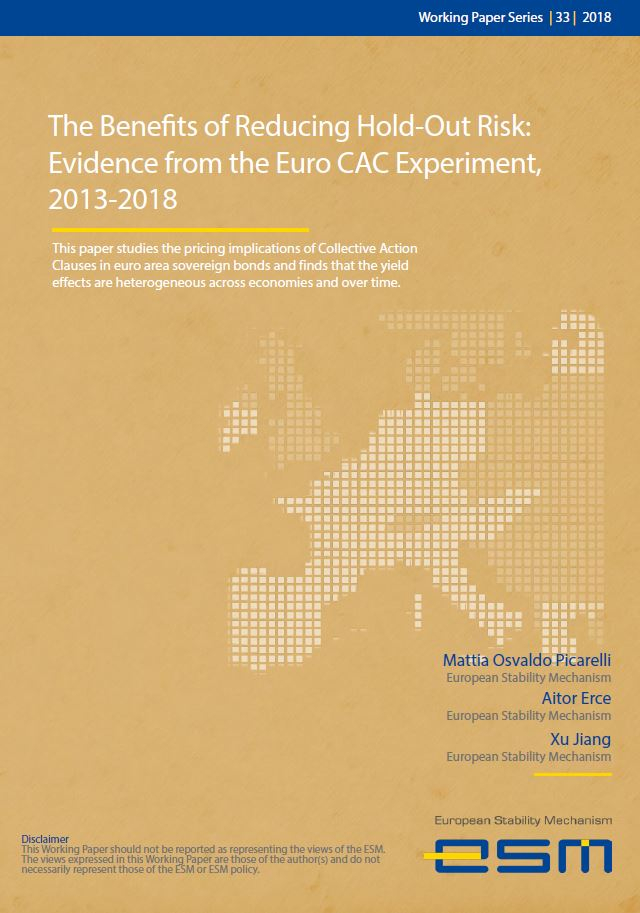The Benefits of Reducing Hold-Out Risk: Evidence from the Euro CAC Experiment, 2013-2018

Download PDF: Working Paper 33
This paper studies the pricing implications of Collective Action Clauses in euro area sovereign bonds and finds that the yield effects are heterogeneous across economies and over time.
Authors: Mattia Osvaldo Picarelli, Aitor Erce, Xu Jiang (all ESM)
Abstract:
The introduction of collective action clauses in advanced economies’ sovereign bonds is an understudied phenomenon. An important concern is whether these clauses produce segmentation, pushing apart the price of those bonds issued with and without collective action clauses (CACs). This paper uses the introduction in 2013 of mandatory two-limb CACs in euro area sovereign bonds issued under domestic law to evaluate the price impact of these provisions. In the euro area, bonds with CACs trade at a small premium. On average for those bonds, yields were up to six basis points lower. This average, however, masks heterogeneity. While Germany and Netherlands have not seen a sustained reduction in borrowing costs, in Italy and Spain the effect has been large (between five and ten basis points). These findings support the argument that the introduction of euro CACs in domestic law bonds helped investors reassess the risks associated with those instruments in both countries.
Disclaimer: This Working Paper should not be reported as representing the views of the ESM. The views expressed in this Working Paper are those of the author(s) and do not necessarily represent those of the ESM or ESM policy. No responsibility or liability is accepted by the ESM in relation to the accuracy or completeness of the information, including any data sets, presented in this Working Paper.
Keywords: Collective action clause, hold-outs, sovereign risk, bond yields
JEL codes: F34, H63, K41